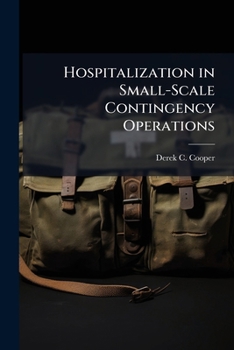Hospitalization in Small-Scale Contingency Operations
Select Format
Select Condition 
Book Overview
This thesis examines the US Army Interim Force needs with regard to deployable hospitalization during small-scale contingency (SSC) operations and the Army Medical Department's (AMEDD) ability to adequately meet the requirements. Under the current medical reengineering (MRI) plan the AMEDD appears to be postured well for supporting major theater wars (MTW). Some will argue that if an MRI structure can support the worst-case scenario--two nearly simultaneous MTWs--then clearly it could adequately support a number of SSCs. In analyzing this argument, this thesis focuses primarily on the characteristics and capabilities that echelon-III hospital units need in order to deploy and support SSCs under present and emerging conditions.
The study analyzes relevant doctrine, historical examples, and future concepts and selects the most critical characteristics required of an echelon-III hospital to be relevant in support of SSC operations. The study then evaluates four different hospital platforms and their ability to meet the desired goals of the critical characteristics. Finally, based on the assessment, the study provides recommendations for the Army's development of echelon-III hospitals in the future.This work has been selected by scholars as being culturally important, and is part of the knowledge base of civilization as we know it. This work was reproduced from the original artifact, and remains as true to the original work as possible. Therefore, you will see the original copyright references, library stamps (as most of these works have been housed in our most important libraries around the world), and other notations in the work.
This work is in the public domain in the United States of America, and possibly other nations. Within the United States, you may freely copy and distribute this work, as no entity (individual or corporate) has a copyright on the body of the work.
As a reproduction of a historical artifact, this work may contain missing or blurred pages, poor pictures, errant marks, etc. Scholars believe, and we concur, that this work is important enough to be preserved, reproduced, and made generally available to the public. We appreciate your support of the preservation process, and thank you for being an important part of keeping this knowledge alive and relevant.
Related Subjects
Education Education & Reference History Political Science Politics & Social Sciences




